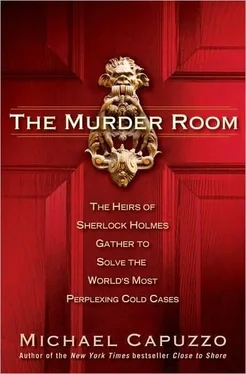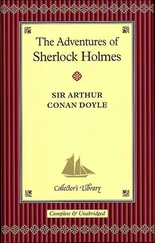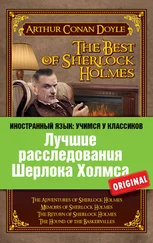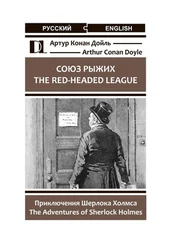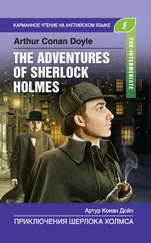Howard’s ID was so new that the Boulder sheriff ’s office would not announce it until three days after the Vidocq ball, in a press release that didn’t mention the Vidocq Society by name. But Boulder sheriff ’s detective Steve Ainsworth-the lead detective on the case-said, “Frank gave Jane Doe a face and a personality. The likeness was uncanny.”
Bender seemed to grow more amazing as the years went by. Yet this evening was shadowed by the fact that his wife was too ill to attend. Her cancer had come back. Jan believed her husband’s love and divine intervention had allowed her to beat the prognosis for more than a year. But recently she had quit her job as a law firm receptionist. The exhaustion and pain were too much. She was planning for hospice care. Doctors did not expect her to live another year. Bender was trying to remain positive. “Jan’s beat it once, and the doctors couldn’t explain it. If miracles can happen once, they can happen again.”
Joan, his longtime Girlfriend No. 1 and art assistant, was his date for the evening. Tall and blond, with her hair done up over a black dress, she looked on with tenderness and pride as he received a stream of well-wishers and kudos.
Bender still felt the loss of legendary medical examiner Hal Fillinger, the old lion of the Vidocq Society who died in 2006, and who had launched Bender’s career in the Philadelphia morgue in 1977. In those thirty-two years, Bender’s forensic art had changed the face of American crime and criminology. The FBI, after years of slighting Bender and experimenting with computer forensic busts, had returned to old-fashioned art by human hands-to doing it like Frank did it.
His powerful assist to the marshals in bringing in their number one Most Wanted fugitive in 1987, Cosa Nostra kingpin Alphonse “Allie Boy” Persico, had shaken up the Joseph Colombo crime family in New York City. Persico was the older brother and right-hand man of Carmine “The Snake” Persico, the godfather of the Colombo family.
On September 12, 1989, two years after his arrest, Allie Boy died of cancer of the larynx at the age of sixty-one while serving a twenty-five-year sentence at the federal correctional facility in Lompoc, California.
Mass murderer John E. List, whose capture two decades earlier brought Bender international notice, had also recently died in prison. On March 21, 2008, List, an inmate at New Jersey State Prison in Trenton, succumbed to complications of pneumonia. He had enjoyed the largesse of New Jersey taxpayers until the ripe old age of eighty-two.
List lived eighteen years behind bars, nearly the same amount of time he spent as a fugitive. He outlived the family he murdered by thirty-seven years. In a 2002 television interview with ABC’s Connie Chung, List said he killed his family out of fear they would be destroyed by debt and fall away from their Christian beliefs. List prayed aloud for their souls as he laid the bodies of his wife and children under the Tiffany dome skylight in the ballroom. Walter pointed out that if List had simply sold the Tiffany, he could have erased his debts instead of his family.
Until his death List corresponded monthly with the ninety-three-year-old Lutheran pastor he knew as a young man, who believed God had forgiven List for killing his wife, mother, and three young children. The Newark Star-Ledger begged to differ. “If the hell John List so strongly believed in exists, surely he is there today.”
The New York Times told its worldwide readers that a producer at America ’s Most Wanted had asked “Frank Bender, a forensic sculptor, and Richard Walter, a criminal psychologist,” to help capture the fugitive mass murderer. For the previous eighteen years, “dozens of FBI agents and investigators from Union County, New Jersey, found no trace of Mr. List in the United States or overseas.” Bender’s bust led to List’s arrest in eleven days.
John Walsh, the host of America ’s Most Wanted, was widely quoted crediting Bender’s List sculpture for launching AMW as a phenomenon. “I call Frank with the tough cases,” Walsh said. Bender’s legacy as a crime-fighting artist was secure.
The Times described his work in admiring detail. “Studying photographs of Mr. List when he was in his mid-40s, Mr. Bender imagined how he might look in 1989, his face sagging with time,” the newspaper wrote.
But the sculptor was apoplectic when he read the next sentence in the Times: “Mr. Walter theorized that Mr. List would still be wearing horn-rimmed glasses, to make him appear successful.” Although the newspaper had gotten it mostly right, Bender grew more determined to extinguish Walter’s small but important contribution from the record. He talked about suing media organizations that made the same mistake. “Frank, are you nuts?” Walter replied.
But the thin man let his own fires tamp down. “If he’s nuts, he’s our nut. Frank’s my partner, for better and often for worse.”
Just a month before the Vidocq banquet, on September 10, Bender’s thirty years of forensic work came full circle. John Martini, the mob hit man and serial killer who murdered Anna Duval at the Philadelphia airport in 1977, Bender’s first case, died in New Jersey State Prison in Trenton, also the jailhouse of John List.
Martini, seventy-nine, New Jersey ’s oldest death row inmate, was confined to a wheelchair, ill, obese. Depressed, he told his attorneys in 1991 that he wanted to drop appeals and be put to death rather than eat bad prison food and live in “horrible” conditions. The week before he was to be executed, a nun working as a prison chaplain got him to change his mind, and the execution never occurred.
The long suffering of Marilyn Flax, the widow of business executive Irving Flax, kidnapped and murdered by Martini in 1989, reminded Fleisher of the passion that still drove him to help America’s victims of crime, who still were often victimized by the justice system as well.
For years the widow was afraid to go to the bank where she withdrew their entire $25,000 savings to pay the ransom to Martini (who shot her husband anyway). She had negotiated with the kidnapper herself, a “horror,” looked into his ice-cold eyes at the drop-off. For years she slept three hours a night, terrified Martini would fulfill his threat to “have somebody kill me.”
She still wore the first diamond pendant her husband gave her, kept his pajamas, socks, and ties in a dresser in her bedroom, carried the first note he ever sent her, “Miss you already.”
“We were madly, madly in love,” she said of her husband. “I couldn’t wait to wake up in the morning to see him. He felt the same way.” When she realized she would never have the satisfaction of seeing Martini die by lethal injection, she wrote him a letter on death row.
“You took away the love of my life,” she wrote. “They say God is a forgiving God… but I am certain that Heaven’s doors are not open to you. Just to think that your soul will be tormented forever and ever-what a comfort that gives me. Enjoy hell.”
Walter and Bender were still tight as warring brothers. They had gone up to Manlius, New York, together to be honored at the Manlius Police Benevolent Association banquet for joint work in solving the murder of Lorean Weaver, the Girl with the Missing Face. After the banquet, they celebrated at the crowded hotel bar in what seemed a competition to drink the most vodka. At four in the morning, they were the only two standing. Later, they lectured together to a high school criminal justice class in Manlius taught by Kathy Hall, wife of detective Keith Hall (who’d first called Bender and the Vidocq Society in on the case, and received the Vidocq Society Medal of Honor for his work).
As he talked to the students, Walter realized that despite their differences he and Bender shared a rare bond, a sense of mystery. Bender told the students the trick to “putting a face on a faceless skull” was to feel the invisible harmonies in the universe. Walter told them, “Once you have crawled inside the soul of the criminal and heard some of the just evil people do, it has an effect. It can put the cold water to innocence. There’re lots of things if I didn’t have to know, I’d rather not.” The thin man said that when one faced these things as he and his partner did, when one acknowledged true evil, life became very precious.
Читать дальше
